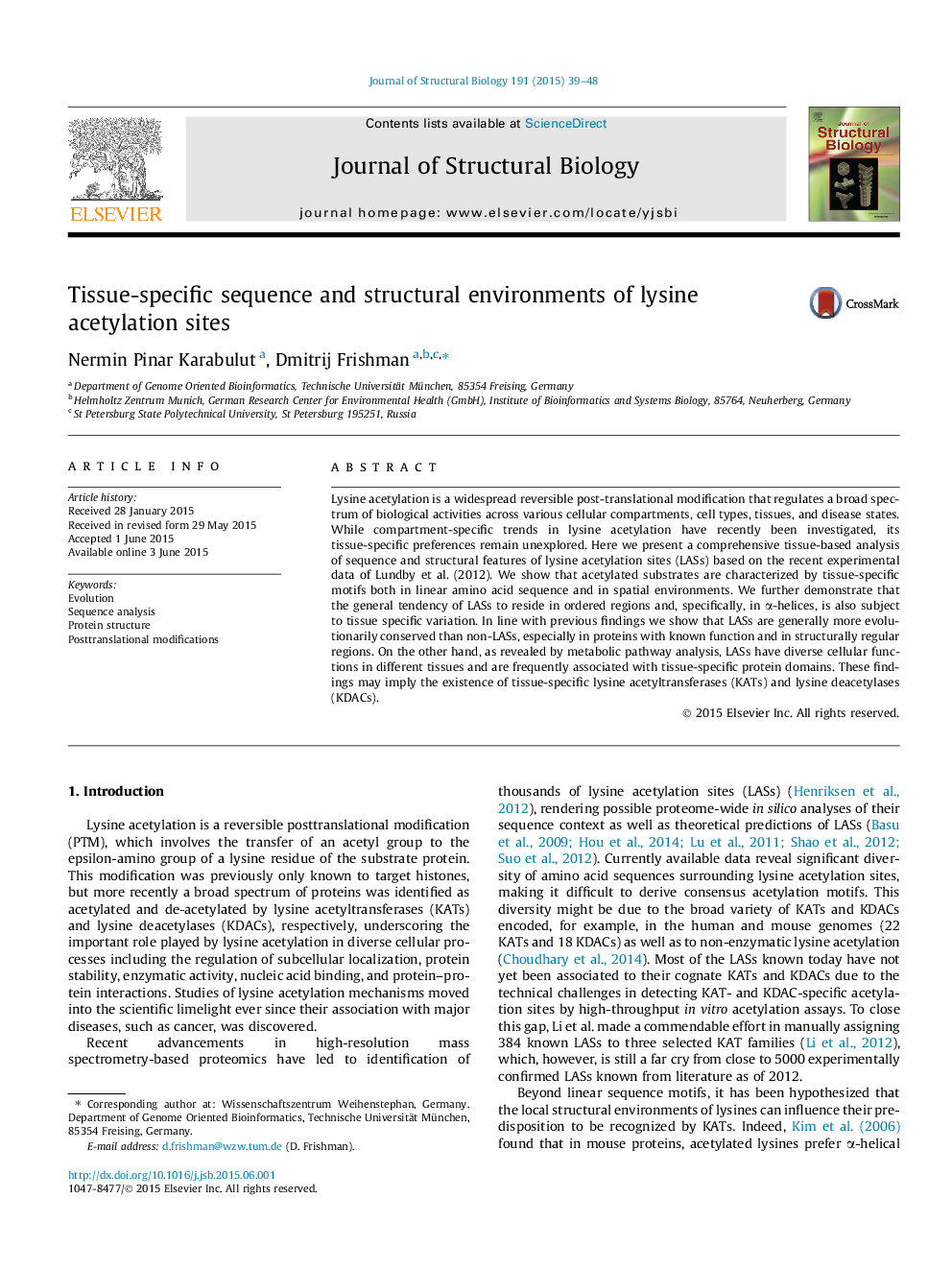| Article ID | Journal | Published Year | Pages | File Type |
|---|---|---|---|---|
| 5913868 | Journal of Structural Biology | 2015 | 10 Pages |
Lysine acetylation is a widespread reversible post-translational modification that regulates a broad spectrum of biological activities across various cellular compartments, cell types, tissues, and disease states. While compartment-specific trends in lysine acetylation have recently been investigated, its tissue-specific preferences remain unexplored. Here we present a comprehensive tissue-based analysis of sequence and structural features of lysine acetylation sites (LASs) based on the recent experimental data of Lundby et al. (2012). We show that acetylated substrates are characterized by tissue-specific motifs both in linear amino acid sequence and in spatial environments. We further demonstrate that the general tendency of LASs to reside in ordered regions and, specifically, in α-helices, is also subject to tissue specific variation. In line with previous findings we show that LASs are generally more evolutionarily conserved than non-LASs, especially in proteins with known function and in structurally regular regions. On the other hand, as revealed by metabolic pathway analysis, LASs have diverse cellular functions in different tissues and are frequently associated with tissue-specific protein domains. These findings may imply the existence of tissue-specific lysine acetyltransferases (KATs) and lysine deacetylases (KDACs).
